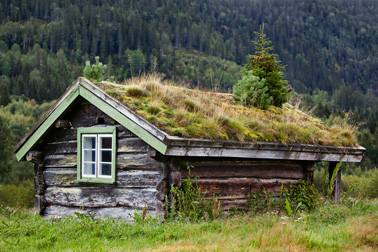 By TreeLiving
By TreeLiving
A living green roof is a roof that can be partially or completely covered with vegetation and is normally planted over a waterproofing membrane. Living green roofs can also comprise of additional layers like a root barrier, drainage, as well as irrigation systems. They are very easy to use and install and you can not only preserve the environment but also save a l ot of money.
Other types of living green roofs are container gardens where plants are maintained in pots. But some feel that these cannot be called living green roofs though this point is highly debatable. Another type of living green roofs is rooftop ponds and these are used generally to treat greywater.
Living green roofs offer lots of advantages to buildings, whether residential or commercial. Some of these benefits include absorbing rainwater, giving insulation, providing a habitat for birds and animals, lowering the urban air temperatures and reducing the heat island effect.
The two chief varieties of living green roofs that are used most commonly are intensive roofs and extensive roofs. While intensive roofs are thicker and support a wide variety of plants, these are very heavy and need a lot of maintenance as compared to extensive roofs. On the other hand, extensive roofs are covered with a thin layer of vegetation or grass that is lighter and easier to maintain.
Living green roofs are known by different names in different places. Some of the most commonly used names for living green roofs are cool roof, a roof with solar thermal collectors or photovoltaic panels, eco roofs, vegetated roofs, living roofs or just green roofs.
A number of studies conducted by environmental experts have revealed that green roofs can reduce the overall heating as it adds mass and thermal resistance value. It has also been proven that living green roofs can significantly reduce heat loss and energy usage during the winter season. These living green roofs can also reduce cooling loads on a building by 50% to 90%. This is more relevant in the case of glass buildings where these living green roofs can also considerably reduce the average temperature of the premises during the hot summer season.
Besides all these benefits, living green roofs can also filter various pollutants and carbon dioxide out of the air. This helps in lowering diseases like asthma and other breathing problems. These can also help insulate a building for sound which results in a more peaceful and healthier working environment.
Living green roofs have been used for more than a century in various countries across the world. You can also consult a roofing expert and get living green roofs installed in your property. They not only help the environment but also help you save money and increase the value of your property.

